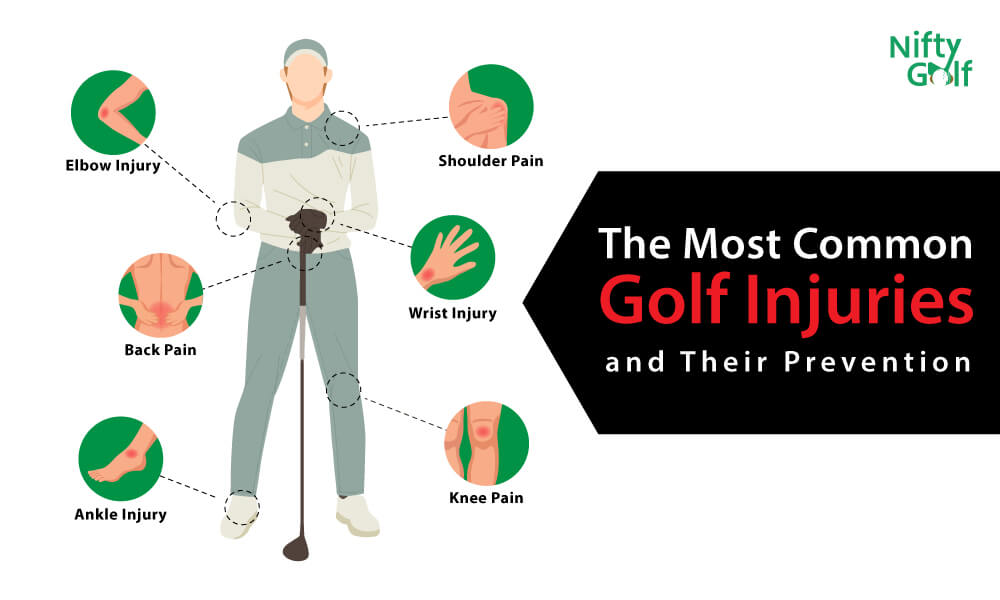Mastering Golf Injury Management: Your Comprehensive Guide

Golf is a beloved sport enjoyed by millions, but it comes with its fair share of risks. Injuries can sideline even the most passionate players. Understanding how to manage golf-related injuries is crucial for maintaining your game and health. This guide will equip you with essential knowledge on prevention, treatment, and rehabilitation strategies to keep you swinging for years to come.
Understanding Golf-Related Injuries
Golf-related injuries often stem from repetitive motions, improper techniques, or inadequate fitness levels. These injuries can affect anyone, from weekend warriors to seasoned pros. By recognizing the common types of injuries and their causes, you can take proactive steps to prevent them and manage any issues that arise.
What Are Common Golf-Related Injuries?
Common golf injuries include tendonitis, muscle strains, and lower back pain. These conditions can result from overuse or poor posture during play. Here’s a closer look at these injuries:
Symptoms and Diagnosis
- Tendonitis: Often manifests as pain and swelling around joints. Look for discomfort during swings or when gripping the club.
- Muscle Strains: Signs include sudden pain during movement, stiffness, or a feeling of weakness in the affected area.
- Lower Back Pain: This can be chronic or acute, often worsened by improper swing mechanics.
Recognizing these symptoms early can help you seek appropriate care, ensuring a quicker recovery.

Preventing Golf Injuries
Preventing injuries is always better than treating them. Here are some effective strategies:
Warm-Up and Stretching Techniques
Before hitting the course, take time to warm up. Simple stretching exercises can improve flexibility and reduce the risk of injury. Focus on areas like the shoulders, back, and legs. A dynamic warm-up that includes arm circles and torso twists can prepare your body for the game.
Practical Tips for Injury Prevention
- Practice Good Swing Mechanics: Consider lessons from a golf pro to correct any flaws in your technique.
- Stay Hydrated: Dehydration can lead to muscle cramps and fatigue.
- Wear Proper Footwear: Invest in golf shoes with good support to maintain balance and reduce strain on your joints.
Managing Golf Injuries
If you do suffer an injury, knowing how to manage it is crucial.

Immediate Steps To Take If Injured
- Stop Playing: Continuing the game can worsen your condition.
- Assess the Injury: Determine the severity before seeking help.
- Rest and Protect: Avoid further strain on the injured area.
Ice and Heat Therapy
Applying ice can reduce swelling and pain in the first 48 hours after an injury. After the initial swelling subsides, consider heat therapy to promote blood flow and healing.
Physical Therapy Options
A physical therapist can provide tailored exercises to help you recover. These might include stretching, strength training, and balance exercises designed specifically for golfers.
Rehabilitation and Recovery
Rehabilitation is essential for a safe return to the game.

Strengthening Exercises for Golfers
Incorporate exercises that target core stability, flexibility, and strength. Consider these:
- Rotational Exercises: Such as medicine ball twists to improve swing mechanics.
- Leg Strengthening: Squats and lunges can enhance stability during your swing.
Recovery Timeline
Recovery can vary based on the injury but generally takes several weeks. Listen to your body and consult with a healthcare professional before returning to play.
When to Seek Professional Help
Knowing when to seek professional help can save you from long-term damage. If you experience:
- Severe pain that doesn’t improve with rest.
- Swelling that persists or worsens.
- Loss of mobility in the affected area.
These signs indicate it’s time to consult a healthcare provider. Early intervention can lead to better outcomes.
Conclusion
Managing golf-related injuries involves understanding their causes and implementing effective prevention and recovery strategies. By following the tips in this guide, you’ll enjoy a healthier, more active lifestyle on the course. Don’t let injuries dictate your game; instead, take proactive steps to ensure your golfing experience is both enjoyable and safe. Remember, incorporating golf health tips into your routine can make all the difference. Happy golfing!
This comprehensive guide covers essential aspects of managing golf-related injuries, from prevention to rehabilitation. By integrating effective strategies and understanding your body, you can maintain your passion for golf while minimizing injury risks. For further insights, consider consulting with professionals and staying informed about the latest in golf injury management.
